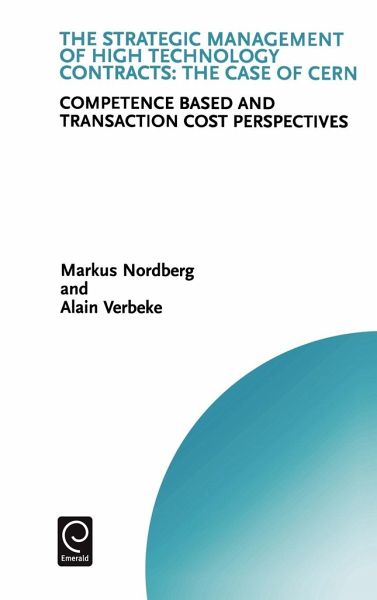
The Strategic Management of High Technology Contracts
Versandkostenfrei!
Versandfertig in 1-2 Wochen
157,99 €
inkl. MwSt.

PAYBACK Punkte
79 °P sammeln!
High technology research laboratories are under constant pressure from the governments that support them to generate secondary utilities such as technology transfer and spin-offs. As buyers, such organisations are often used by governments to stimulate innovation by their suppliers, under tight budgetary constraints and within the rigid institutional frameworks applied to public research organisations. This book addresses the design of efficient buyer-supplier contracts within the institutional boundaries faced by the buyer and focuses in particular on vertical buyer-supplier linkages as a sou...
High technology research laboratories are under constant pressure from the governments that support them to generate secondary utilities such as technology transfer and spin-offs. As buyers, such organisations are often used by governments to stimulate innovation by their suppliers, under tight budgetary constraints and within the rigid institutional frameworks applied to public research organisations. This book addresses the design of efficient buyer-supplier contracts within the institutional boundaries faced by the buyer and focuses in particular on vertical buyer-supplier linkages as a source of supplier core competencies in a cost- and technology-driven environment. Based on a study of manufacturing contracts commissioned by the European Laboratory for Particle Physics (CERN), the book aims to answer two questions. First, what is the most efficient governance structure for organising buyer-supplier relationships, given the presence of specific institutional boundaries, high technological complexity and environmental uncertainty? Secondly, irrespective of the presence of such an efficient governance structure, what type of impact could technology-oriented government contracts have on supplier core competencies?












